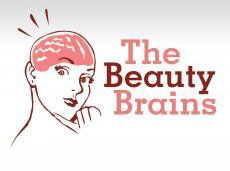The Right Brain instructs…
We haven’t done a Beauty Science post in a while so here’s one on hair color.
Alright, admit it. You’ve gone to the salon or bought a box at the store just to change the color of your hair. It’s not surprising as over 75% of women in the United States report coloring their hair. But did you ever wonder what exactly is going on? How are your lovely brown locks transformed into sassy blond strands?
A brief history of hair coloring
Before we talk about how hair color is changed now, it is helpful to know how women have been modifying their hair color for centuries. Ancient Egyptians were known to use indigo leaves, black walnut shells and henna extracts to give their jet black hair reddish or bluish tints. Women in India also used henna to color their hair. Lighter colors were achieved by the ancient Roman women who used acidic plant extracts and sun to bleach their colors. Unfortunately, these natural solutions had limited and inconsistent effects. And it wasn’t until the late 1800s when hydrogen peroxide solutions were introduced that people were actually able to create truly blond hair.
What makes your hair’s natural color?
You might be surprised to learn that all natural hair colors are the result of only 2 types of hair pigment. That’s right, red heads, blonds, and brunettes are all created by the same 2 pigments. Both of these pigments are a type of melanin and it is produced right inside your hair follicle. Phaeomelanin is responsible for the yellowish-blond to red colors and Eumelanin is responsible for the brown to black shades.
What about gray hair? Well, this is what happens when you stop producing these melanin molecules. Grey/white hair is what hair looks like when there is no pigment.
How is hair color changed?
If you’re like most people, you’ve changed the color of your hair at some point in your life. There are really only three ways that hair is colored, bleaching, staining, or a combination of both. Which one you use depends on primarily on factors including your starting hair color, your ending hair color, and how long you want it to last.
Going lighter
We’ve already talked about what gives your hair its natural color. If you have dark hair and want to go lighter then you have to do something to remove the color you’ve already got. This is where bleaching comes in.
Bleach (most commonly hydrogen peroxide) chemically reacts with the hair’s melanin rendering it permanently colorless. How light it gets depends on the strength of the bleach solution and the amount of time it is left on the hair. If you have a really dark color you’ll need to use repeated applications to chemically change all of the melanin. But even if you use the strongest bleach you can find, the hair will maintain a pale yellow tint. This is due to the fact that there is still some melanin that will remain unreacted. To get all of the pigment to react, an alkaline solution is used in addition to the peroxide in order to open up the hair’s cuticles and allow the bleach into the hair shaft.
Note that bleaching is a permanent color change that is not reversible. If you lighten your hair you can only go dark again by coloring it or letting new hair grow out.
Making your hair darker
To make hair darker you’ll need to add color to it. If you are not sure about a new color, you should start with a temporary hair colorant. Temporary or semi-permanent hair colors are stains that deposit color on the outside of the hair shaft. These are the same type of compounds people have been using for centuries. Unfortunately (or fortunately) they wash out after a number of shampooings.
Of course, the lighter your hair the easier it will be to add different hair colors. If you have blond hair you can go to almost any color from black to red to brown to blue. If you have dark hair changing to a different shade will require a different strategy.
Changing to a different hair color shade
If you want to really change your hair color then you’ll want to have a permanent dye job. No matter what hair color you start with, permanent dying is a two-step process. First, your natural hair color is removed through the process of bleaching as described above. Then the hair dye is put on your hair where it chemically reacts to permanently change the color. Typically, both of these processes happen at the same time.
The permanent hair dyes are special chemicals. They start out as tiny molecules (called monomers) that are small enough to penetrate into your hair shafts. Then when they are there, they react with each other to create bigger molecules (called polymers). These polymers are so big that they can not be washed out of your hair. They stay in your hair even through shampooing. At least they are supposed to.
The problem with ‘permanent’ hair color
In an ideal world, permanent hair color would stay permanent. Unfortunately, hair color can be removed and it is, EVERY TIME YOU WASH. Anytime you expose your artificial hair color to water and shampoo you lose more and more hair dye. And it doesn’t matter what kind of shampoo you are using. ALL Shampoos that require you to get your hair wet will strip hair color. This is why you are not able to keep the just-from-the-salon look for more than a couple of days.
Interested in other beauty science topics? Leave a comment and we’ll try to do a write-up soon.
